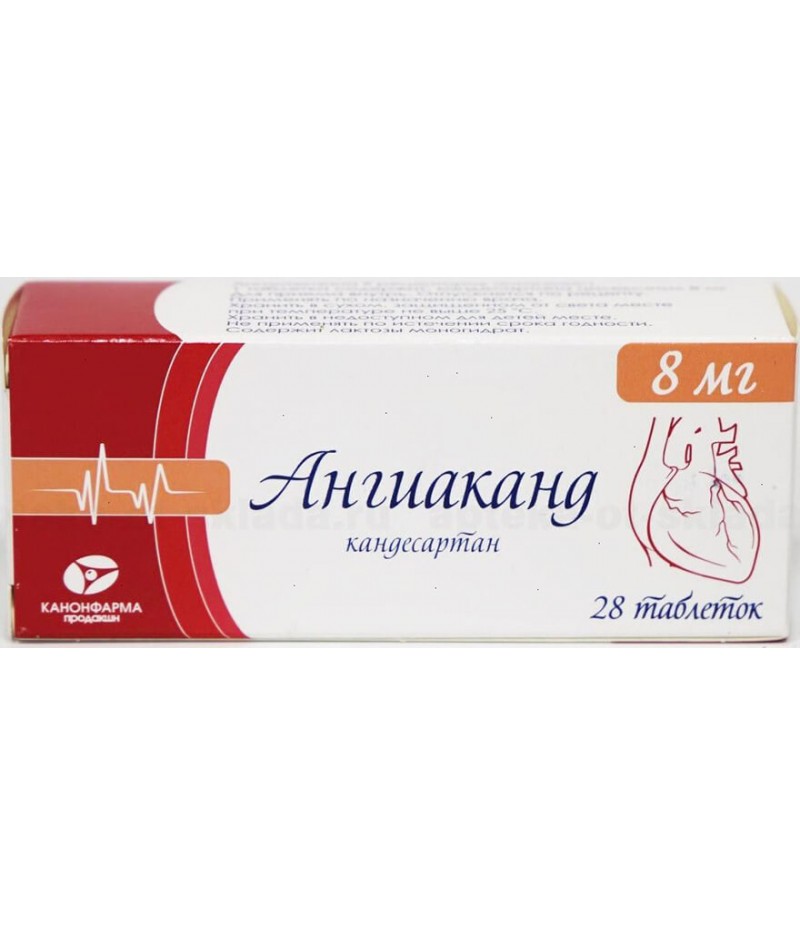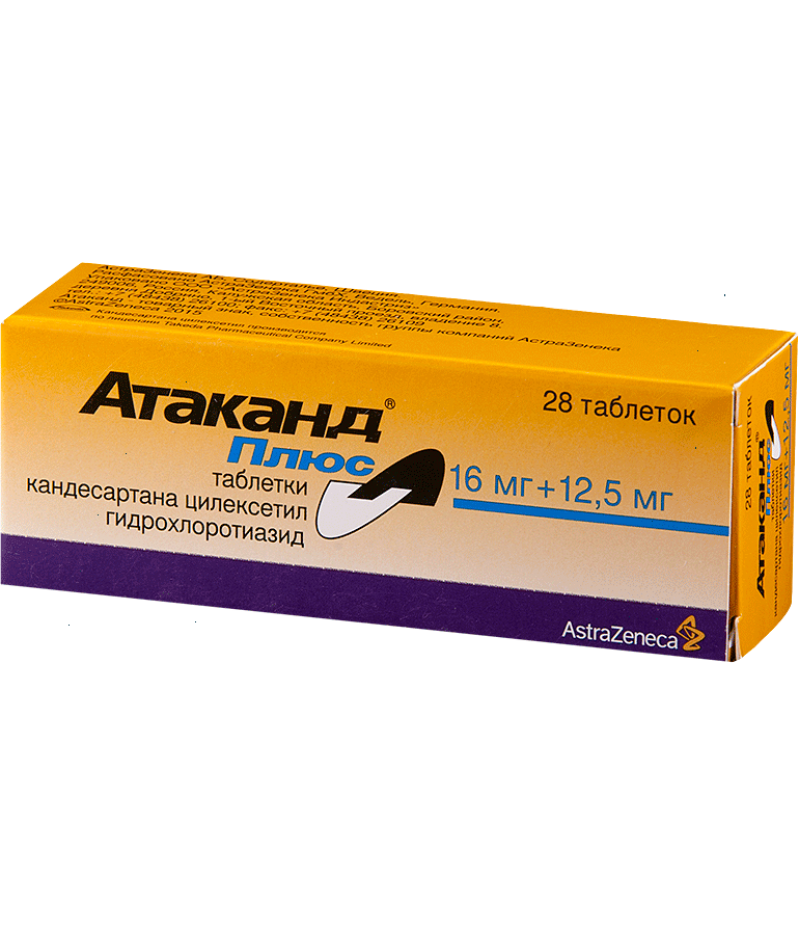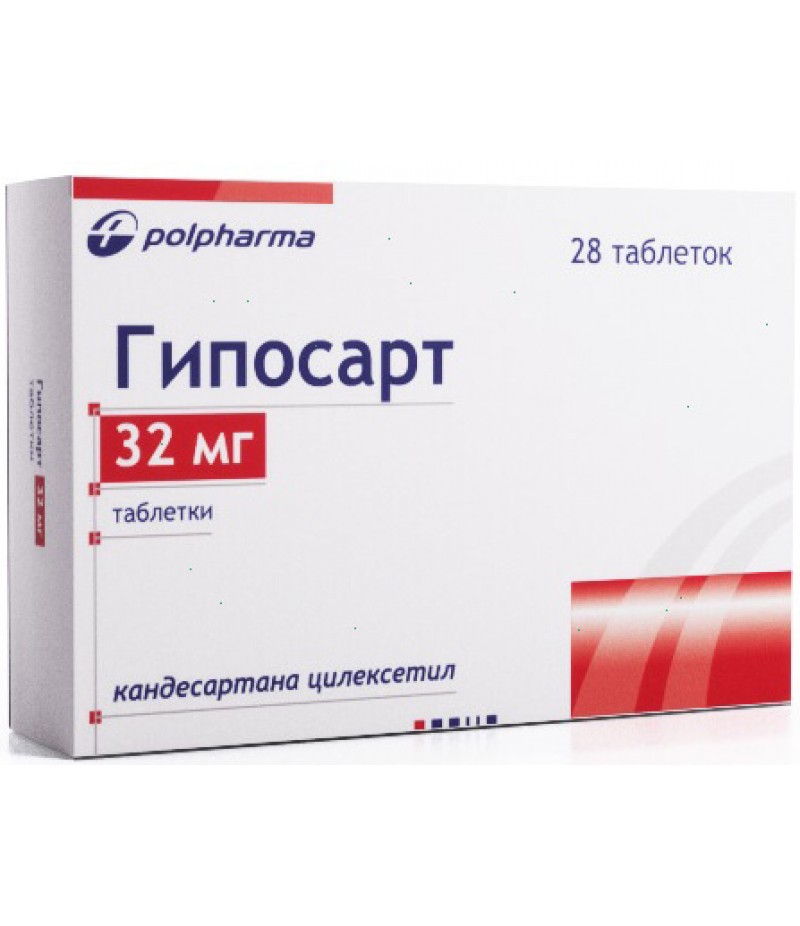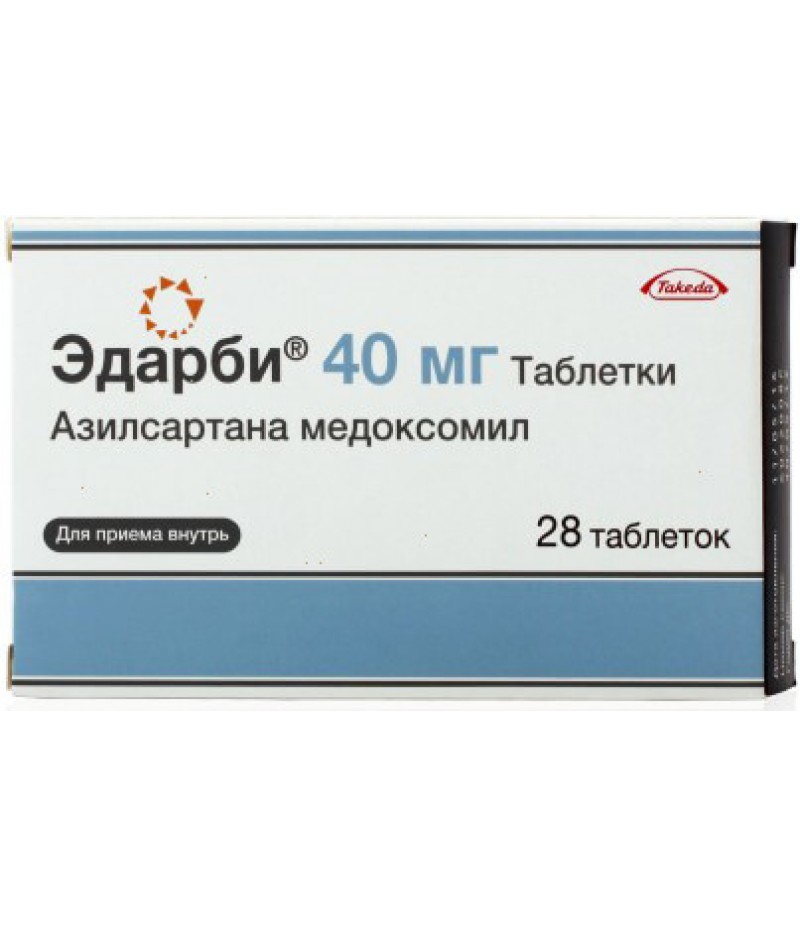Angiakand tabs 8mg #28
- $16.99
- 3 or more $16.85
- Availability:In Stock
Angiakand instructionYou can buy Angiakand hereCompositionDosage 8 mg1 tablet contains:active ingredient: candesartan cilexetil 8 mg;excipients: pregelatinized corn starch - 20.3 mg, croscarmellose sodium (primellose) - 3.5 mg, la..
Tags: tabs
Angiakand instruction
You can buy Angiakand here
Composition
Dosage 8 mg
1 tablet contains:
active ingredient: candesartan cilexetil 8 mg;
excipients: pregelatinized corn starch - 20.3 mg, croscarmellose sodium (primellose) - 3.5 mg, lactose monohydrate (milk sugar) - 64.5 mg, magnesium stearate - 0.7 mg, povidone-K30 - 3 mg.
Dosage 16 mg
1 tablet contains:
active ingredient: candesartan cilexetil 16 mg;
excipients: pregelatinized corn starch - 23.8 mg, croscarmellose sodium (primellose) - 5 mg, lactose monohydrate (milk sugar) - 90 mg, magnesium stearate - 1 mg, povidone-K30 - 4.2 mg.
Dosage 32 mg
1 tablet contains:
active ingredient: candesartan cilexetil 32 mg;
excipients: pregelatinized corn starch - 27.5 mg, croscarmellose sodium (primellose) - 7 mg, lactose monohydrate (milk sugar) - 126 mg, magnesium stearate - 1.5 mg, povidone-K30 - 6 mg.
Description
Tablets of white or almost white color, round, biconvex.
Pharmacotherapeutic group
Angiotensin II receptor antagonist.
ATH code: C09SA06.
Pharmacodynamics
Candesartan is a selective antagonist of type II angiotensin II receptors (AT1 receptors), forms a strong bond with them, followed by slow dissociation. It has a vasodilating, hypotensive and diuretic effect. Does not show agonist properties (does not inhibit angiotensin-converting enzyme (ACE) and does not lead to the accumulation of bradykinin or substance P, does not bind to receptors of other hormones, does not block the ion channels involved in the regulation of the functions of the cardiovascular system). Blocking the AT1 receptor angiotensin II results in a compensatory dose-dependent increase in the activity of renin, the concentration of angiotensin I, angiotensin II and a decrease in plasma aldosterone concentration.
Arterial hypertension
The antihypertensive effect is due to a decrease in total peripheral vascular resistance (OPSS), and there is no effect on heart rate (HR). There were no cases of severe arterial hypotension after taking the first dose of Angiakand, as well as the "cancellation" syndrome after cessation of therapy. The onset of the antihypertensive effect after taking the first dose usually develops within 2 hours. Against the background of ongoing drug therapy in a fixed dose, the maximum reduction in blood pressure (BP) is usually achieved within 4 weeks and persists throughout the treatment.
Candesartan increases renal blood flow and does not alter or increase the glomerular filtration rate, while vascular resistance in the kidneys and the filtration fraction are reduced.
It does not affect glucose concentration and lipid profile in patients with arterial hypertension and type 2 diabetes. Provides dose-dependent smooth decrease in blood pressure.
Age and gender do not affect the effectiveness of the drug.
Chronic heart failure
In patients with chronic heart failure and a decrease in the left ventricular ejection fraction of less than 40%, candesartan administration reduced OPS and capillary pressure in the lungs, increased renin activity and angiotensin II plasma levels, and decreased aldosterone concentrations.
Pharmacokinetics
Candesartan is a prodrug for oral administration. Quickly (by means of ether hydrolysis) it turns into pharmacologically active candesartan. The absolute bioavailability of candesartan after ingestion of a solution of candesartan cilexetil is about 40%. The relative bioavailability of the tablet preparation compared to the oral solution is approximately 34%. Thus, the calculated absolute bioavailability of the tablet form is about 14% and does not depend on the time of eating. The maximum concentration (Cmax) in the serum is reached after 3-4 hours. The concentration in the blood plasma increases linearly with increasing dose in the therapeutic interval (up to 32 mg). The volume of distribution - 0.13 l / kg. Communication with plasma proteins - 99.8%.
Slightly metabolized in the liver (20-30%) with the participation of the cytochrome P450 isoenzyme CYP2C9 with the formation of an inactive derivative. The final half-life (T1 / 2) is 9 hours. Not cumulated. Total clearance is 0.37 ml / min / kg, while renal clearance is about 0.19 ml / min / kg. Excreted by the kidneys and with bile mainly unchanged, to a small extent as a metabolite: by the kidneys (by glomerular filtration and active tubular secretion) - 26% as candesartan and 7% as an inactive metabolite, with bile - 56% and 10%, respectively. After a single oral administration over 72 hours, more than 90% of the dose is eliminated.
In elderly patients (over 65), Cmax and the area under the concentration-time curve (AUC) increase by 50% and 80%, respectively, compared with young patients. However, the antihypertensive effect and the incidence of side effects when using Angiakand does not depend on the age of the patients.
In patients with mild and moderate degrees of renal dysfunction, Cmax and AUC are increased by 50% and 70%, respectively, while the T1 / 2 of the drug does not change as compared with patients with normal renal function.
In patients with severely impaired renal function, Cmax and AUC are increased by 50% and 110%, respectively, and the T1 / 2 of the drug is increased by 2 times.
In patients with mild and moderate liver function impairment, an increase in AUC was observed by 23%.
Indications for use
arterial hypertension;
chronic heart failure and violation of the systolic function of the left ventricle (reduction of the left ventricular ejection fraction less than 40%) as an additional therapy to angiotensin-converting enzyme (ACE) inhibitors or in case of intolerance to ACE inhibitors.
Contraindications
hypersensitivity to candesartan or other components of Angiakand;
lactase deficiency, lactose intolerance, glucose-galactose malabsorption;
pregnancy;
lactation period;
primary hyperaldosteronism (resistance to therapy);
severe abnormal liver function and / or cholestasis;
age up to 18 years.
Carefully
Severe renal failure (creatinine clearance (CC) less than 30 ml / min), bilateral renal artery stenosis, renal artery stenosis of a single kidney, after a history of kidney transplantation, hemodynamically significant stenosis of the aortic and mitral valve, cerebrovascular disease, ischemic heart disease, hypertrophic obstructive valve, heart disease, hypertrophic obstructive valve, mitral valve cardiomyopathy, circulating blood volume reduction (BCC), hyperkalemia.
Use during pregnancy and lactation
In animal studies, kidney damage was detected in the embryonic and neonatal periods with candesartan. It is assumed that the damage mechanism is due to the pharmacological effect of the drug on the renin-angiotensin-aldosterone system (RAAS).
In the human embryo, the kidney blood supply system, which depends on the development of the RAAS, begins to form in the second trimester of pregnancy. Thus, the risk to the fetus increases with the use of candesartan in the second and third trimesters of pregnancy. Drugs that have a direct effect on the RAAS can cause impaired fetal development or have a negative effect on the newborn, even death, when using Angiakand in the second and third trimesters of pregnancy.
Angiakand should not be used during pregnancy. If pregnancy is detected during drug treatment, therapy should be discontinued as soon as possible.
It is not known whether candesartan is excreted into breast milk. Due to the possible undesirable effect on infants, Angiakand should not be used during breastfeeding.
Dosage and administration
Inside, regardless of the meal, 1 time per day.
Arterial hypertension
The recommended starting and maintenance dose is 8 mg once a day. Patients who need a further reduction in blood pressure, it is recommended to increase the dose to 16 mg once a day. The maximum daily dose of the drug is 32 mg once a day.
The maximum antihypertensive effect occurs 4 weeks after the start of treatment.
If therapy with the drug Angiakand does not lead to a decrease in blood pressure to the optimal target level, it is recommended to add thiazide diuretic to therapy.
Elderly patients no adjustment of the initial dose is required.
Patients with mild or moderate renal dysfunction (CC more than 30 ml / min) do not need to change the initial dose of Angiakand.
Patients with severe impaired renal function (CC less than 30 ml / min) and patients with mild or moderately impaired liver function: the recommended initial dose is 4 mg 1 time per day (candesartan may be used in another form of release).
Chronic heart failure
The recommended initial dose is 4 mg 1 time per day (you can use the drug candesartan in another form of release).
Increasing the dose to 32 mg 1 time per day or to the maximum tolerated dose is carried out by doubling it at an interval of at least 2 weeks.
Elderly patients and patients with impaired renal function and / or liver do not need to change the initial dose of Angiakand.
Angiakand can be used in conjunction with other drugs used in the treatment of chronic heart failure, for example, ACE inhibitors, beta-blockers, diuretics and cardiac glycosides. Side effect
Arterial hypertension
The most common side effects (≥1 / 100, <1/10):
From the side of the central nervous system: dizziness, weakness, headache;
On the part of the musculoskeletal system, connective tissue: back pain;
Other: respiratory infections;
Laboratory indicators: decrease in hemoglobin, hypercreatininemia, increased concentration of urea in the blood, hyperkalemia, hyponatremia, increased activity of alanine aminotransferase (ALT).
Chronic heart failure
The most common side effects (≥1 / 100, <1/10):
Since the cardiovascular system: a pronounced decrease in blood pressure;
From the urinary system: renal dysfunction;
Laboratory changes: hypercreatininemia, increased concentration of urea in the blood, hyperkalemia.
During post-marketing use of candesartan, the following side effects were reported (frequency - less than 1/10 000):
From the side of blood formation organs: leukopenia, neutropenia and agranulocytosis;
Laboratory indicators: hyperkalemia, hyponatremia;
From the side of the central nervous system: dizziness, weakness, headache;
On the part of the digestive system: nausea;
On the part of the liver and biliary tract: increased activity of "liver" transaminases, impaired liver function or hepatitis;
Allergic reactions: angioedema, skin rash, itching, urticaria;
On the part of the musculoskeletal system, connective tissue: back pain, arthralgia, myalgia;
On the part of the urinary system: impaired renal function, including acute renal failure in susceptible patients.
On the part of the respiratory system: cough.
Overdose
Symptoms: marked decrease in blood pressure, dizziness, tachycardia.
Treatment: symptomatic, put the patient on his back, lift the lower limbs above the head, if necessary - an increase in circulating blood volume (BCC) by infusion of 0.9% sodium chloride solution, the use of sympathomimetics. Hemodialysis is ineffective.
Interaction with other drugs
With the combined use of candesartan with hydrochlorothiazide, warfarin, digoxin, oral contraceptives (ethinyl estradiol / levonorgestrel), glibenclamide, nifedipine and enalapril, there are no clinically significant interactions.
With simultaneous use of lithium preparations with ACE inhibitors, a reversible increase in the concentration of lithium in the blood serum and the development of toxic reactions were reported. Adverse reactions may also occur with the use of angiotensin II receptor antagonists, and therefore, it is recommended to control the level of lithium in the blood serum with the combined use of these drugs.
With simultaneous use of angiotensin II receptor antagonists and nonsteroidal anti-inflammatory drugs (NSAIDs), including selective cyclooxygenase-2 (COX-2) inhibitors and non-selective NSAIDs, for example, acetylsalicylic acid, more than 3 g / day, the hypotensive effect of candesartan may decrease. As in the case of ACE inhibitors, the simultaneous use of angiotensin II receptor antagonists and NSAIDs increases the risk of reduced renal function, up to the development of renal failure, which leads to hyperkalemia in patients with impaired renal function. This combination should be used with caution, especially in elderly patients. All patients should receive an adequate amount of fluid. It is necessary to monitor the function of the kidneys at the beginning of therapy and in the future.
Drugs that affect the RAAS can increase the concentration of urea and creatinine in the blood of patients with bilateral renal artery stenosis or stenosis of a single kidney artery.
Diuretics and other antihypertensive drugs increase the risk of arterial hypotension.
Potassium-sparing diuretics, potassium preparations, salt substitutes containing potassium, and other drugs that can increase serum potassium levels (for example, heparin) increase the risk of hyperkalemia.
Candesartan is metabolized to the liver to a slight degree (CYP2C9 isoenzyme). Conducted interaction studies did not reveal the effect of candesartan on CYP2C9 and CYP3A4 isoenzymes. The effect on other isoenzymes of the cytochrome P450 system has not been studied.
special instructions
Before and during treatment, monitoring of blood pressure, kidney function (plasma creatinine), potassium, and lithium levels in the blood serum (with the combined use of drugs) is necessary.
Hypotension
Patients with chronic heart failure during therapy with Angiakand may develop arterial hypotension. As with the use of other drugs that affect the RAAS, the cause of arterial hypotension in patients with arterial hypertension may be a decrease in BCC, as observed in patients receiving large doses of diuretics. Therefore, at the beginning of therapy, care should be taken and, if necessary, correction of hypovolemia.
Renal artery stenosis
In patients with bilateral renal artery stenosis or arterial stenosis of a single kidney, drugs that affect the RAAS, in particular, ACE inhibitors, may cause an increase in serum urea and creatinine concentrations. Similar effects can be expected when prescribing angiotensin II receptor antagonists.
Kidney transplant
Data on the use of candesartan in patients who have recently had a kidney transplant is not available.
Renal dysfunction
Against the background of therapy with Angiakand, as with the use of other anti-RAAS drugs, some patients may have impaired renal function.
When using the drug Angiakand in patients with arterial hypertension and severe renal insufficiency, it is recommended to periodically monitor the content of potassium and creatinine in the blood serum. Clinical experience with candesartan in patients with severe renal impairment or end-stage renal failure (CC less than 15 ml / min) is limited.
In patients with chronic heart failure, it is necessary to periodically monitor renal function, especially in patients aged 75 years and older, as well as in patients with impaired renal function. At higher doses of the drug Angiakand it is also recommended to control the content of potassium and creatinine in the blood plasma.
Combined use with ACE inhibitors in chronic heart failure
When using the drug Angiakand in combination with ACE inhibitors may increase the risk of side effects, especially impaired renal function and hyperkalemia. In these cases, careful monitoring and control of laboratory parameters is necessary.
General Anesthesia and Surgery
In patients receiving angiotensin II receptor antagonists, during general anesthesia and during surgical interventions, arterial hypotension may develop as a result of blockade of RAAS. Very rarely, there may be cases of severe hypotension requiring intravenous fluid and / or vasopressors.
Aortic and mitral valve stenosis (hypertrophic obstructive cardiomyopathy)
When using the drug Angiakand, as well as other vasodilators, patients with hypertrophic obstructive cardiomyopathy or hemodynamically significant stenosis of the aortic and / or mitral valve should be careful.
Primary hyperaldosteronism
Patients with primary hyperaldosteronism are usually resistant to treatment with antihypertensive drugs that affect the activity of the RAAS. In this regard, the drug Angiakand is not recommended for use in these patients.
Hyperkalemia
Clinical experience with other drugs that affect the RAAS shows that the simultaneous use of candesartan with potassium-sparing diuretics, potassium preparations or salt substitutes containing potassium, or other drugs that can increase the potassium content in the blood (for example, heparin) can lead to hyperkalemia in patients with arterial hypertension.
Are common
Patients in whom vascular tone and renal function are primarily dependent on the activity of the RAAS (for example, patients with severe chronic heart failure or kidney disease, including renal artery stenosis) are particularly sensitive to drugs that act on the RAAS. The use of such agents is accompanied in these patients with severe arterial hypotension, azotemia, oliguria and, less commonly, acute renal failure. The possibility of the development of these effects can not be excluded when using angiotensin II receptor antagonists. A sharp decrease in blood pressure in patients with ischemic heart disease or cerebrovascular diseases of ischemic genesis, when using any antihypertensive drugs, can lead to the development of myocardial infarction or stroke. Influence on ability to steer vehicles, mechanisms
During treatment, dizziness, weakness may occur, so care must be taken when driving and engaging in other potentially hazardous activities that require increased concentration and psychomotor speed.
Release form
Tablets of 8 mg, 16 mg and 32 mg.
On 7, 10, 20, 28 or 30 tablets in a blister strip packaging from a film of polyvinyl chloride and aluminum foil printed lacquered.
1, 2, 3, 4, 8 blister packs of 7 tablets each or 1, 2, 3, 4, 5, 6 blister packs of 10 tablets each, or 1, 2, 3 blister packs of 20 tablets each, or 1, 2 blister packs of 28 tablets each, or 1, 2 blister packs of 30 tablets together with the instructions for use are placed in a pack of cardboard.
Storage conditions
In a dry, dark place at a temperature not higher than 25 C.
Keep out of the reach of children.
Shelf life - 2 years.
Do not use after the expiration date.
Terms of sell
You can buy Angiakand without a prescription.






